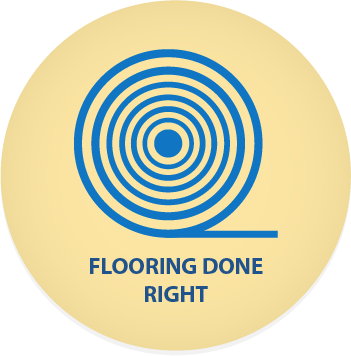We are excited to announce that we have relocated to a new address, 1140-21331 Gordon Way, Richmond, BC V6W 1J9, Canada.

“Island Carpet has been proudly providing flooring in Vancouver since 1971. (604) 278-6256
How To Choose The Correct Carpet Fibre

Carpet fibers generally fall into 5 categories:
1.Wool
2.Nylon
3.Polyester
4.Olefin
5.Smartstrand (Triexta)
There are many reasons to choose any of the above, here we will try and make the selection easier for you. Let's start by explaining the term BCF.
This stands for Bulked Continuous Filament.
Essentially this means the entire carpet has been constructed from a continuous ball of yarn. This increases durability and life of the carpet as well as ensuring your carpet does not shed. The alternative is usually called Staple or Spun yarn carpets, which are made from short pieces of yarn. These carpets will wear much faster and shed their fibers. Your traffic patterns will be visible much sooner than a BCF. Staple products are usually the culprits behind the allergy and dust problems that some people experience with carpet. The fibers break off and enter the air, this can usually be seen on a bright sunny day, no matter how much you vacuum. Since BCF is continuous, it will not break ( within reason, don't beat up your carpet ) and can actually help improve your air quality since this type of carpet will hold onto the dust until you vacuum. Regular cleaning is the answer to improving air quality. Hard surface generally works, but requires a daily sweep in order to keep clean. Dust can swirl around on hard surface, just by walking around the room. BCF carpet will hold the dust. Keep your carpet clean and you shouldn't have many problems with air quality and you can still have the comfort and feel of warmth under foot. Here at Island Carpets and Flooring, when we sell carpet, we sell only like to sell BCF carpets. The good news is, BCF is offered in all price categories!
Wool
Wool is the most durable of the fibers, it is a natural product that has great stain resistance as a result. There are many levels of quality when it comes to wool. We recommend choosing one that has been triple scoured and made from high quality virgin wool. The alternatives just don't measure up and usually have a blend of poly mixed in. High quality wools are expensive, but always worth it. If you have ever heard of a carpet being 40 plus years old, it is probably a high end wool. Keep in mind though that there aren't any BCF sheep out there, so staple yarn it is.
Nylon
Nylon is the most durable of the rest of the fibers. It will last longer and can take a higher amount of foot traffic than the alternatives ( except wool ). It takes longer to crush and matt. Your traffic patterns take longer to appear with this fiber. It is the best choice for high traffic areas like halls and stairs.
It is usually more expensive than poly's and olefin's, but makes up for it in longevity. The new nylon's offered today are usually very soft and luxurious to the touch.Â
Polyester
Poly has great stain protection and resistance. It is favored by those on a budget and with lots of stain makers in the house ( I have 4 kids, they are my stain makers! ) It's drawback is a shorter length of life and traffic patterns are visible sooner than nylon. Poly is much better than in the past, it's stain resistance is a great feature!
Olefin
Olefin is an extremely durable fiber with exceptional stain resistance, mostly used in berber and commercial carpets. It is quite rough and can take a beating. In my opinion, its main drawback is that it has a 'low melting point'. This means that you can melt the tips of the fibers, just by dragging heavy objects over the carpet. Picture a long apartment hallway with lines running down the middle. If it's not part of the pattern and it is olefin, it is usually a result of furniture being dragged and the carpet actually melting. This is permanent and no amount of professional cleaning will help. If you like to move your furniture around, we don't recommend this fiber, as furniture marks are also permanent and usually can't be steamed out like the other fibers.
SmartStrand ( Triexta )
SmartStrand is a stainproof fiber that has been taking a large bite out of traditional carpet fiber sales. It is inherently stain proof. If you picture any fiber under a microscope, you will see holes in the sides of the fiber which are called dye sites. These holes are where the red wine goes when you stain the carpet. The holes are covered over trap door like, by whichever stain protectant is applied to the carpet in manufacturing, but this can wear off with time. SmartStrand fiber does not have holes in it, its sides are essentially like a straw. This allows the stain material to slide off and can be removed by a professional. Drawbacks to this fiber, are it's durability and cost. Its durability is very much the same as poly and it is more expensive to manufacture a thick bulky carpet. You really have to decide which you want more, longevity or stain proofing. This will change as it become cheaper to produce. The fiber is the newest one on the market, approx. 10 to 12 years old and is only manufactured by Mohawk. They have shouldered all of the research and development costs to date and I am assured that once their ROI is significant enough, the costs will come down.

Our pricing has always been fair. 100% satisfaction

We have been providing quality flooring products and installation for nearly five decades

Quality installaton done right the 1st time


























